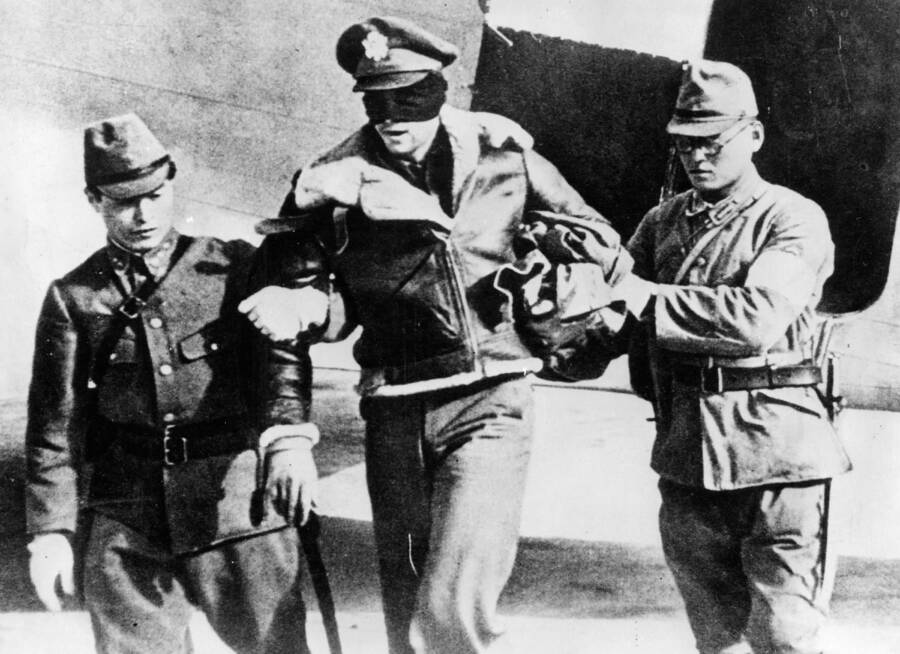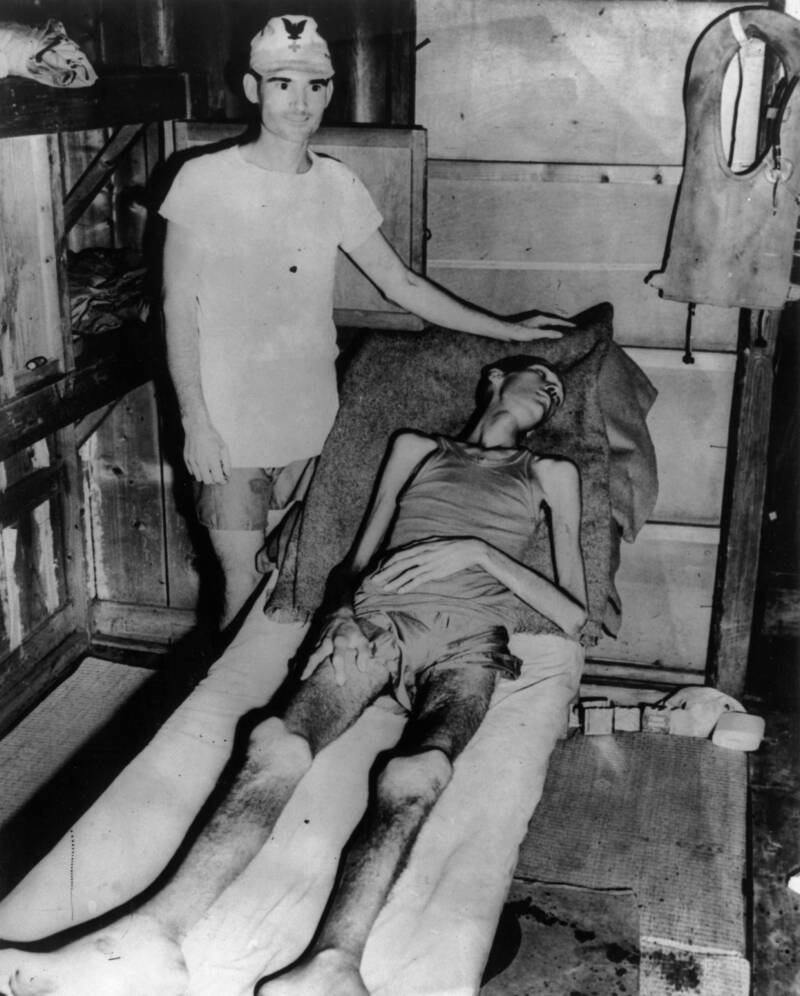The Torture And Execution Of Allied POWs

Universal History Archive/Universal Images Group via Getty ImagesA captive U.S. pilot, blindfolded by Japanese captors. 1942.
Though the Geneva Convention had already established protections for prisoners of war, the Japanese often flouted these rules. Over the course of World War II, they frequently tortured and executed Allied prisoners.
As History Collection reports, Allied POWs were subjected to torture like being forced to drink copious amounts of water until they lost consciousness. Someone would then jump on their abdomen, forcing the water out. There were also accounts — unproven — of the Japanese tying POWs onto beds of sharp bamboo, which grew quickly and impaled them.
Allied POWs were also sometimes subjected to gruesome medical experiments. They were injected with horse blood or seawater, or left to freeze so that Japanese doctors could study the impact of frostbite. Usually, these “experiments” were nothing more than prolonged executions.

Keystone/Getty ImagesAn emaciated prisoner of war rescued from a Japanese prison camp. September 1945.
Indeed, many POWs were summarily massacred.
“Four of our group escaped,” Tech. Sgt. Richard Henry Peterson said, per the U.S. Army. “I — along with three other men — was taken to the Japanese commander. He alternated [between] questioning and beating us with a belt and a bamboo stick from 8 in the morning until 3 in the afternoon. The four of us denied knowing anything about the escape. Actually, we knew everything. We were finally taken back to our compound and the guards took our four top officers to the commander. We saw a Jap firing squad take them out of sight and heard the shots as they were executed.”
As the Allied victory grew ever more certain, scores of POWs were executed. In Puerto Princesa in the Philippines, 150 POWs were doused in gasoline, set on fire, and shot by machine guns. Just 11 men survived that massacre.
Later on, a number of Japanese officers were found guilty of war crimes because they’d approved the torture and execution of Allied POWs. However, many of them eventually received pardons.





